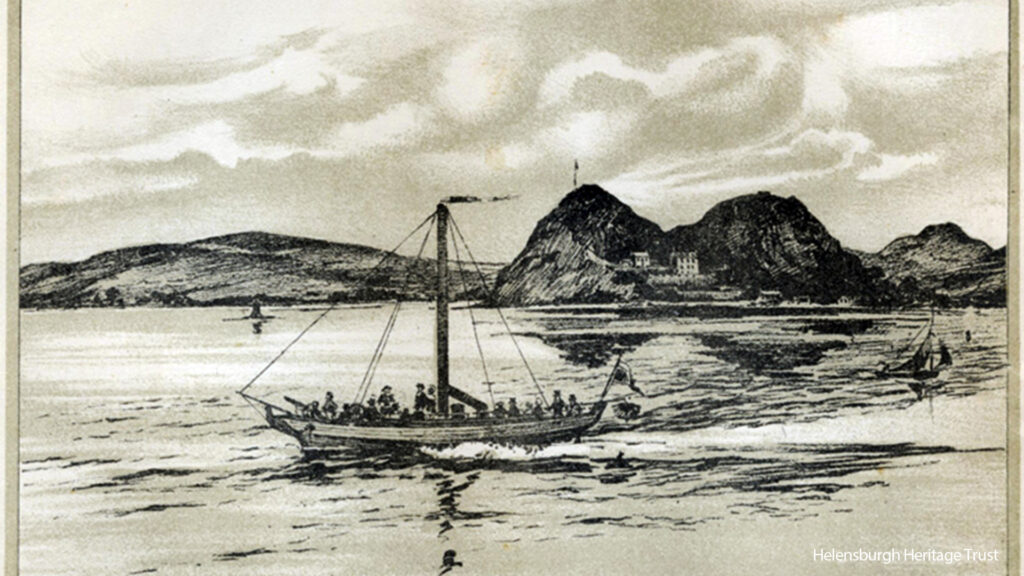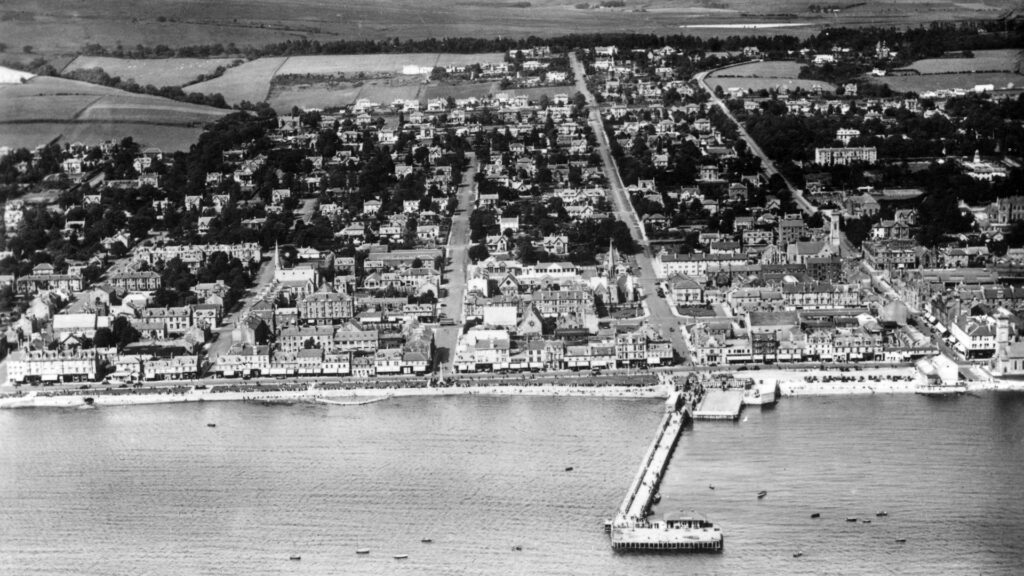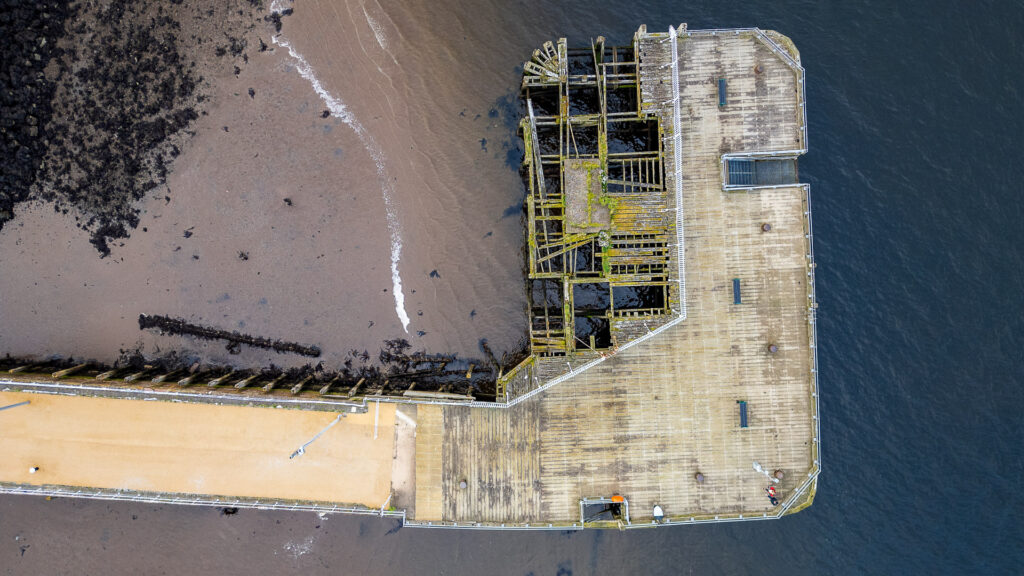1800s
In response to the increase in visitor numbers facilitated by steam navigation in 1816 a stone jetty, instigated by Henry Bell, was built on the site of Helensburgh Pier. Described in the newspaper of the time as a “ruckle of stanes” it was a rough and ready affair.
The first pier was lengthened in 1822 and in 1834 a grant of land from Sir James Colquhoun was gifted for its improvement, on condition that it was kept clear for future improvement of the pier and accommodation of passengers. Responsibility for the pier was taken over by the town council at this time. It was a very unsatisfactory pier and passengers had to be brought ashore by cart to avoid getting wet, with some even preferring to travel on to Rhu Pier. A further reason for the Pier was the existence of large boulders along the shallow beach, glacial erratics transported inside glaciers during the Ice Age and then left in their present sites when the glaciers melted.
An 1846 Act of Parliament declared the pier unsafe and said it needed to be replaced.
A long double-ended pier is first shown in its current location on the Hydrographic Office Map of 1850.
The town magistrates had agreed that the Dumbartonshire Railway Co. would provide funding to upgrade the pier, but when railway funding collapsed in the early 1850s this became unworkable.
The Dumbartonshire Railway realized that the costs (£9,000) would exceed their initial estimates and offered a lump-sum to the payment to the town who responded by taking the matter to the courts.
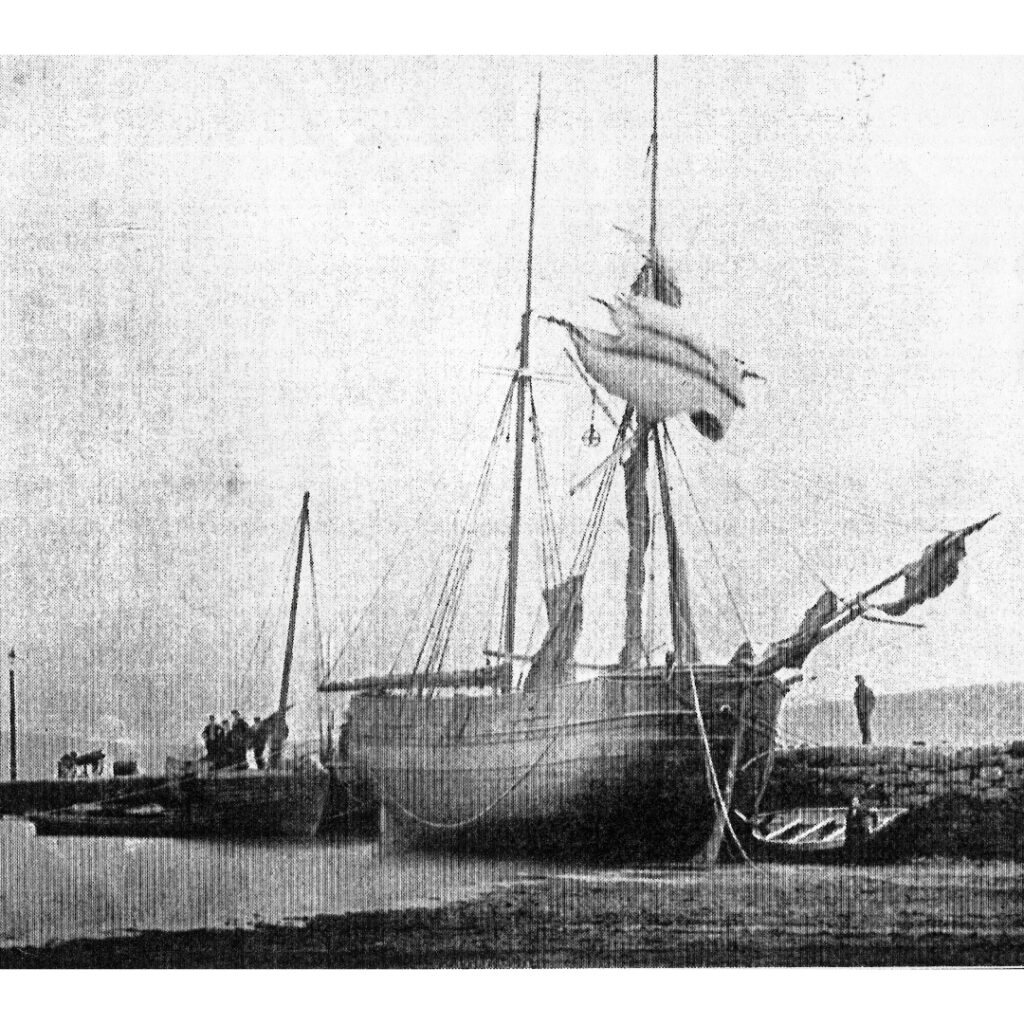
One of the earliest photographs of a pier at Helensburgh c. 1848. Courtesy of the Estate of the late Patricia Drayton
The Glasgow Gazette in June 1851 reported that the
pier at Helensburgh — one of the most beautiful watering places on the Clyde… is not only rough and uneven in surface, so as to be altogether useless to visitors as a promenade, and exceedingly inconvenient in passing to and from the steamers, but it is positively dangerous to land at in certain states of the weather … A good commodious pier is the principal requisite about a watering-place, now that so many persons, whose families reside at the coast, go and return almost daily.
The introduction of a toll of 1d. per head led to a scuffle in which Rev. John Bell, the Episcopalian minister in the town was assaulted by Mr Lennox, the superintendent of the Helensburgh police. Matters were resolved when a number of gentlemen of the town stumped up for the cost of the repairs provided the toll was removed. According to the author Hugh MacDonald, in his 1853 book Days at the Coast, the pier was “shabby and incommodious; in fact utterly unworthy of the locality, and an eyesore and an annoyance to every visitor”. By 1856:
This old quay has again been patched up, and its rugged surface made indifferently passable for the summer traffic. There is little chance of any new pier being erected this year, as the now notorious litigation seems for the last two years to have altogether fallen asleep. Some eight years have now been passed in litigating, and, for aught that is visible to the contrary, the prospect of a new landing place seems as remote as ever. Surely this fact should awaken those who are interested, as it might have done long ago, to the consideration of whether it might be wiser and better to build a quay than litigate for one.
Improvements were made when it was “reconstructed, enlarged and repaired” in 1859 to designs by William Spence. The improvements were funded by Sir James Colquhoun and the building work was undertaken by Thomas Brownlie of Glasgow. The 1d. toll was reintroduced and a gate added.
During the 1860s the improved pier was very busy with up to three steamers berthed at a time. The North British Railway Company became the first railway company to operate steamers on the Clyde in 1866 as the North British Steam Packet Company.
The pier was also used on a commercial basis – by 1869 up to 80 tons of herring a day were being landed at Helensburgh and small cargo vessels (puffers) also used the pier. To increase capacity the pier was further improved when the timber extension was completed in 1871 at a cost of £11,000 to accommodate the steamers.
The first steamer sailed at 8am from the pier, and these continued on an hourly basis until 7.30pm, with a daily total of eleven sailings each way. The pier was operated at this time by Helensburgh Harbour Trust. There were many steamers plying their trade on the Clyde. In the 1850s Messrs Henderson & M‘Kellar provided services to Helensburgh and the Gare Loch, but there was concern that the coming of the railway to Helensburgh in 1858 would reduce the opportunities available. However, this did not materialise and in 1865 the Greenock and Helensburgh Steamboat Company, Limited was established, its directors comprised of landowners from Helensburgh and the Gare Loch, and manufacturers and merchants from Greenock.
In 1877 the town council rejected plans to connect the railway line to the pier head, and instead a large double pier was developed at Craigendoran, adjacent to the station there. This was capable of berthing 4 steamers at a time, and a third railway platform was built curving down to the pierhead, with elegant glass canopies, which allowed special steamer excursion trains from Glasgow direct access to the pier.
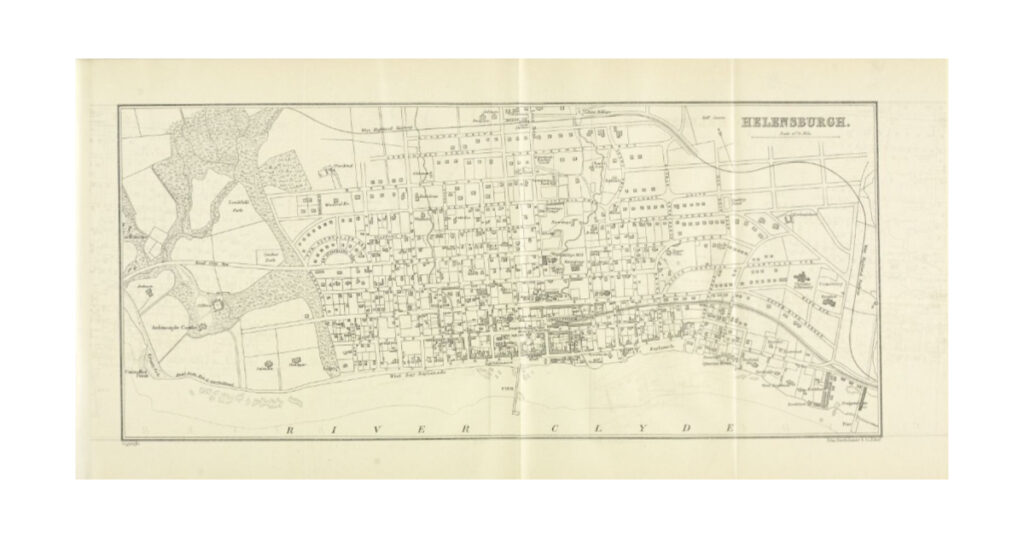
Helensburgh: MacNeur & Bryden, ca. 1899. You can see the Timber Platform at the end of the Pier. CC-BY. Reproduced with the permission of the National Library of Scotland.
The harbour at Helensburgh was deepened in 1880 due to complaints from the sea captains that they had been bottoming in sand. In 1895 a gift of £2,000 from the trustees of Charles Kidston paid off a bond on the pier and it became free for everyone to use without any fees or dues thereafter. An entrance arch and ticket office were built in 1898 to a design by local architect Robert Wemyss, who trained under William Leiper.
The pier was a centre for recreational use. In 1891 the first Helensburgh Regatta was held with yachts congregating off the Pier and the paddle Steamer Lady Clare loaned to the committee (chaired by Commodore Sir James Colquhoun) by the North British Steam Packet Company. The following year, on 5th August 1892, the event was held again on a larger scale and included rowing and swimming events, establishing the regatta as an annual event in the town. The event ran until 1903 and the annual gala became an event of the Helensburgh Amateur Rowing Club and Helensburgh Swimming Club.
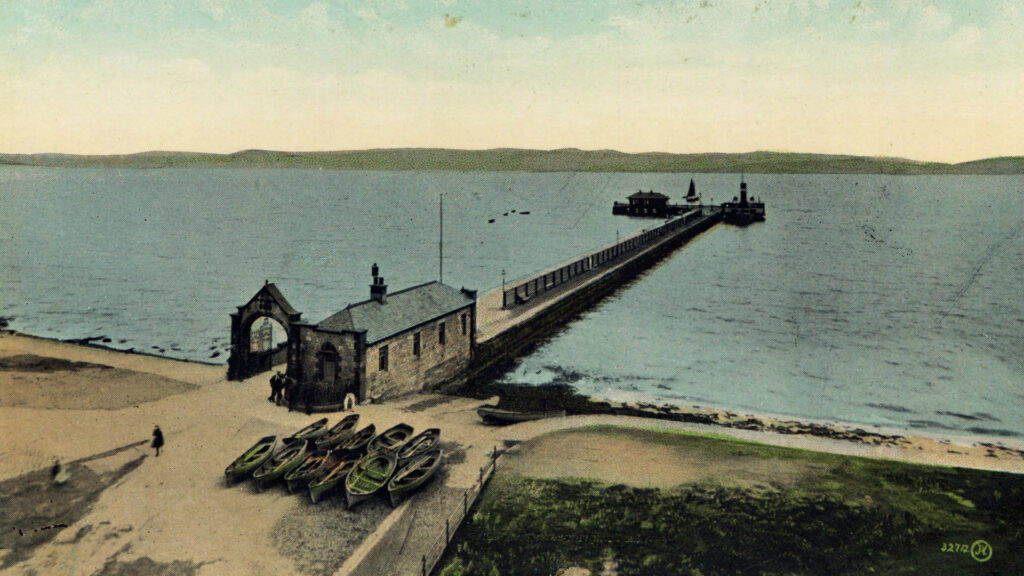
Helensburgh Pier c. 1890s. Courtesy of the Estate of the late Patricia Drayton.

